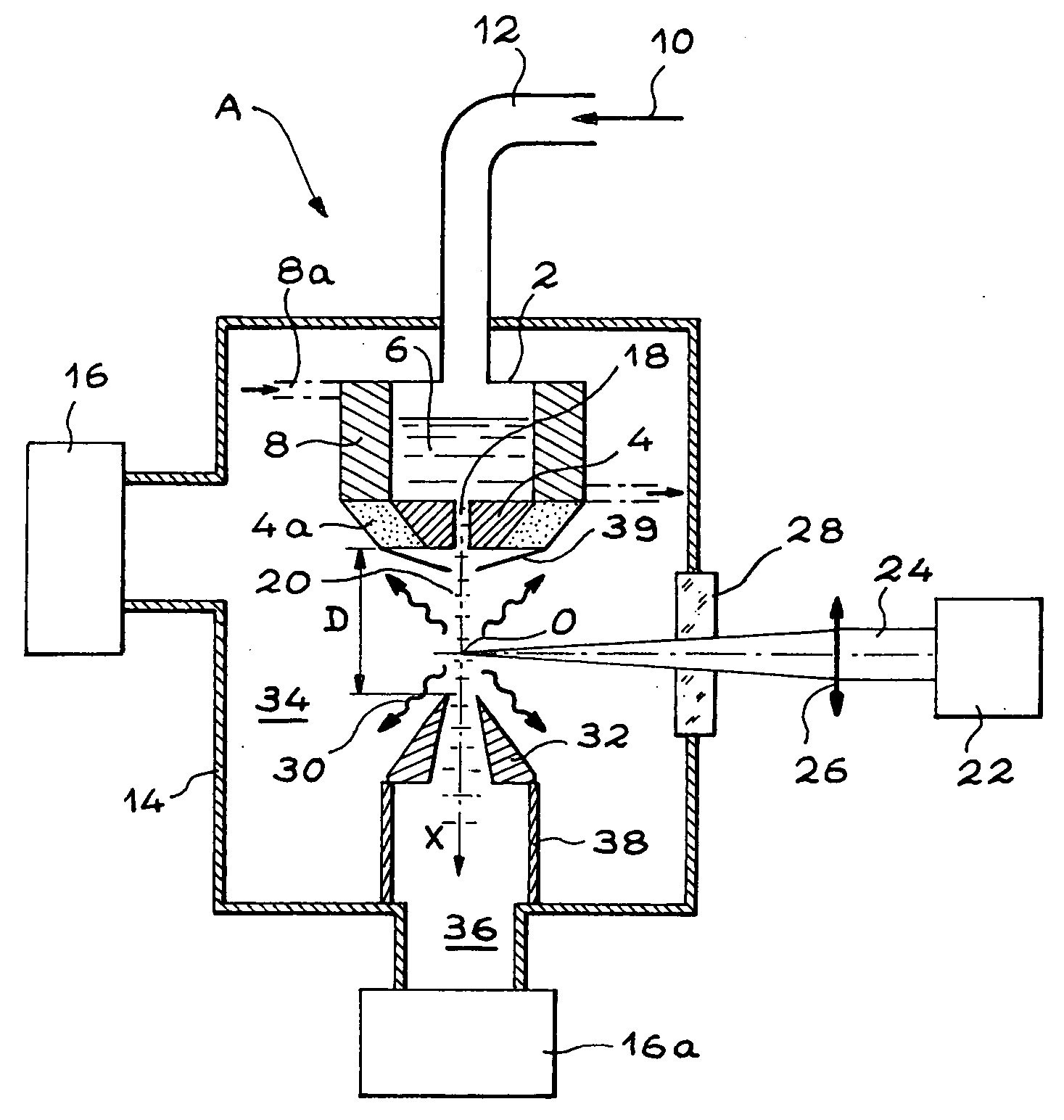Method and device for generating extreme ultravilolet radiation in particular for lithography
a technology of ultravilolet radiation and generator, which is applied in the direction of radiation therapy, x-ray tube gas filling, and x-ray tube with very high current, etc., can solve the problems of large number of atoms, erosion of the nozzle, and significant material debris, and achieves high reliability and great simplicity
- Summary
- Abstract
- Description
- Claims
- Application Information
AI Technical Summary
Benefits of technology
Problems solved by technology
Method used
Image
Examples
Embodiment Construction
[0086] The device A for generating a fog according to the invention, which is schematically illustrated in FIG. 1, comprises a tank 2 and a nozzle 4. This nozzle 4 is positioned close to the tank 2 and communicates with the latter.
[0087] This tank 2 is for containing liquid xenon 6. Cryogenic means 8 are provided for producing this liquid xenon 6 from xenon gas 10.
[0088] Furthermore, the liquid xenon 6 is pressurized by this xenon gas 10. The latter is injected into the tank 2 via a duct 12 and liquefied by the cryogenic means 8 in order to form liquid xenon.
[0089] As an example, these cryogenic means comprise a tube 8a which clasps the tank and the nozzle, only portions of this tube are illustrated in dot and dash lines in FIG. 1, and a cryogenic fluid, for example nitrogen, runs through this tube.
[0090] In addition, these cryogenic means 8 comprise control means (not shown) capable of maintaining liquid xenon at a set temperature T, with -70.degree. C..ltoreq.T.ltoreq.-20.degree. ...
PUM
| Property | Measurement | Unit |
|---|---|---|
| size | aaaaa | aaaaa |
| size | aaaaa | aaaaa |
| pressure | aaaaa | aaaaa |
Abstract
Description
Claims
Application Information
 Login to View More
Login to View More - R&D
- Intellectual Property
- Life Sciences
- Materials
- Tech Scout
- Unparalleled Data Quality
- Higher Quality Content
- 60% Fewer Hallucinations
Browse by: Latest US Patents, China's latest patents, Technical Efficacy Thesaurus, Application Domain, Technology Topic, Popular Technical Reports.
© 2025 PatSnap. All rights reserved.Legal|Privacy policy|Modern Slavery Act Transparency Statement|Sitemap|About US| Contact US: help@patsnap.com



